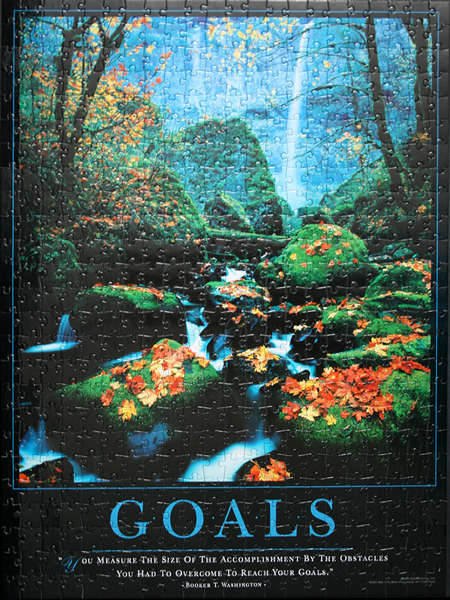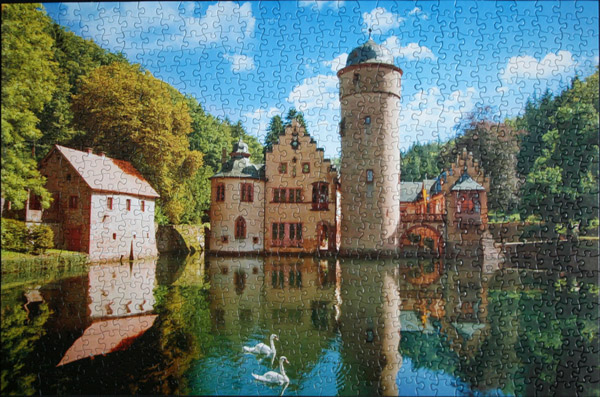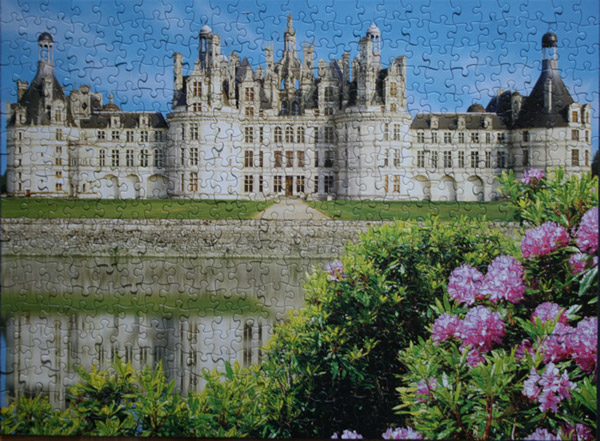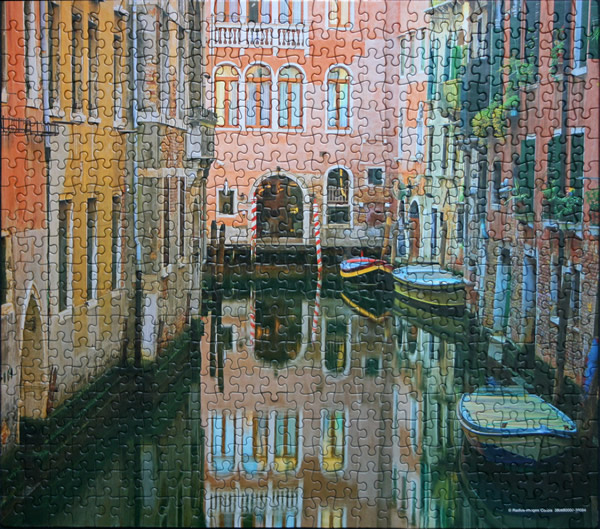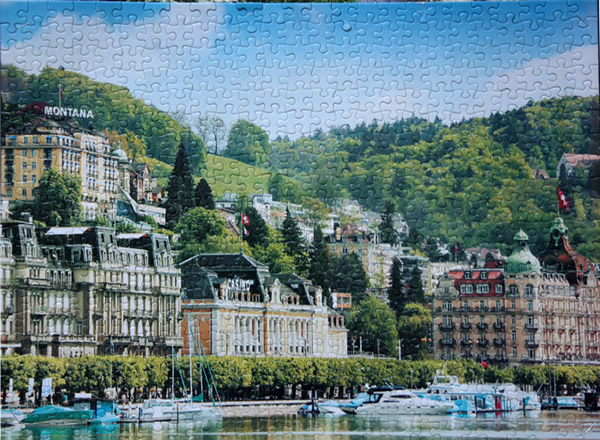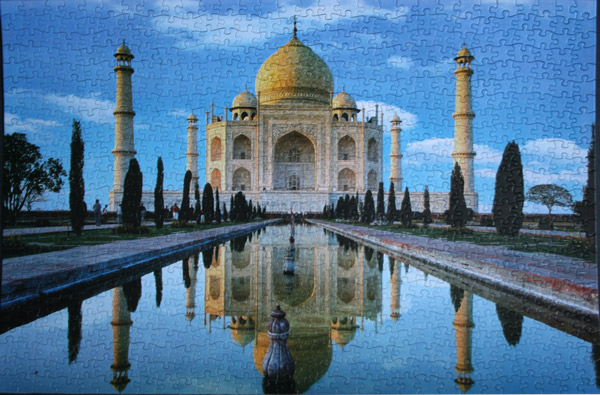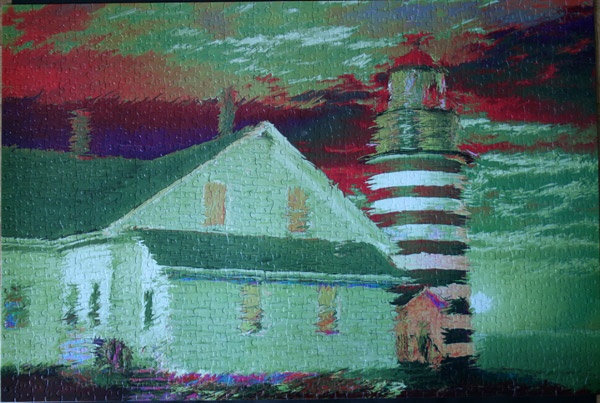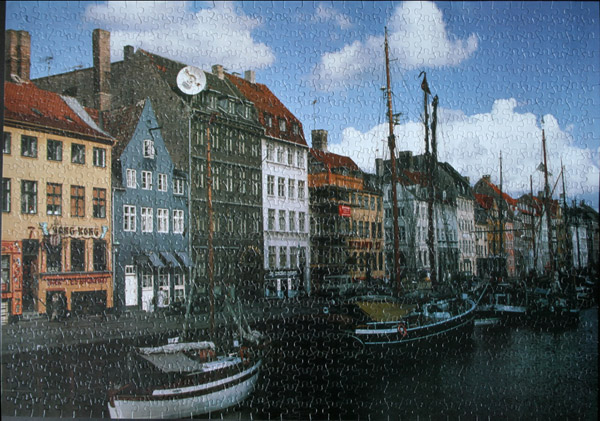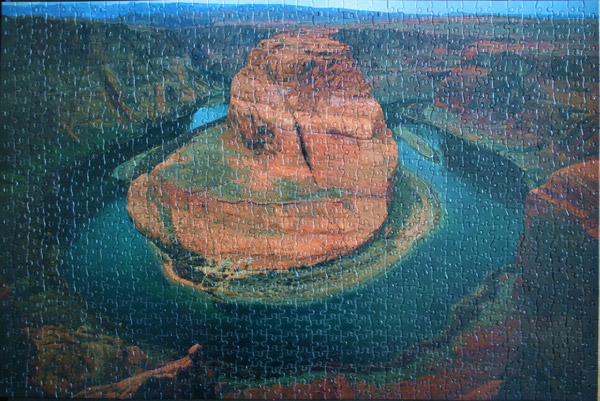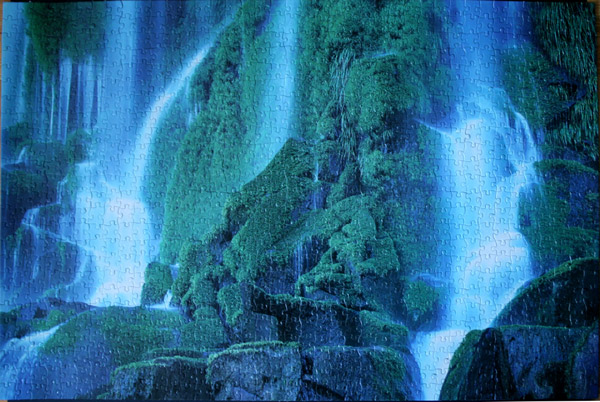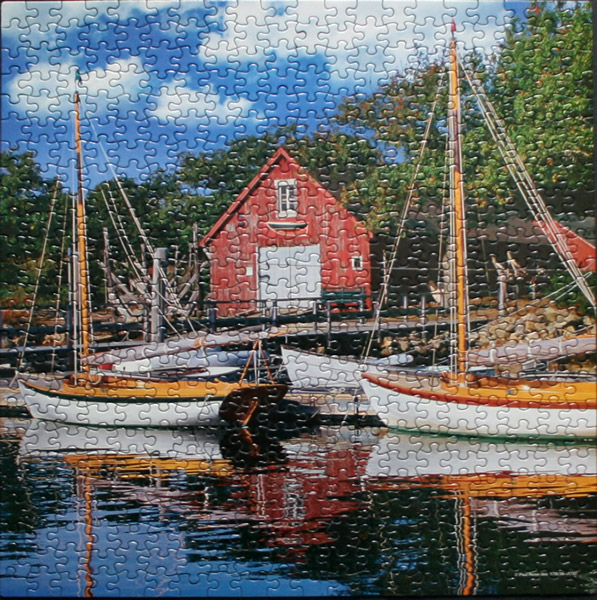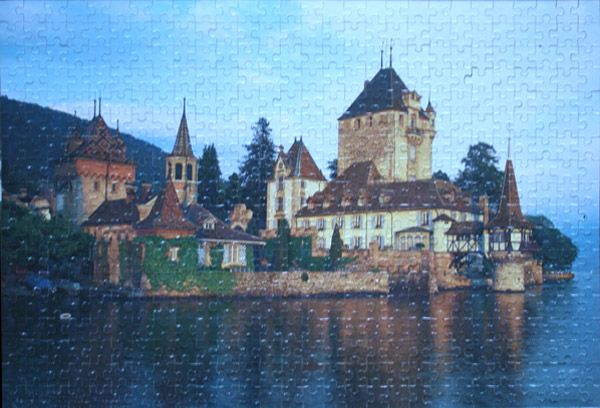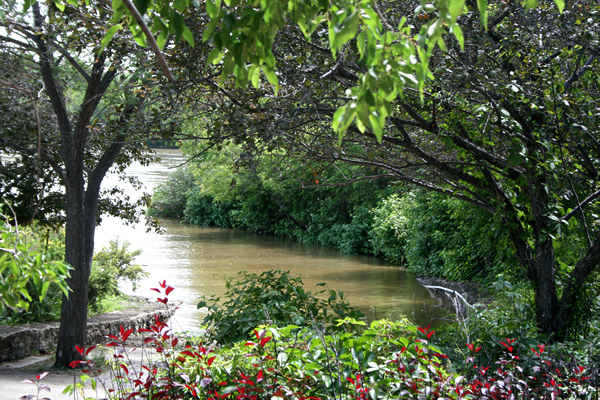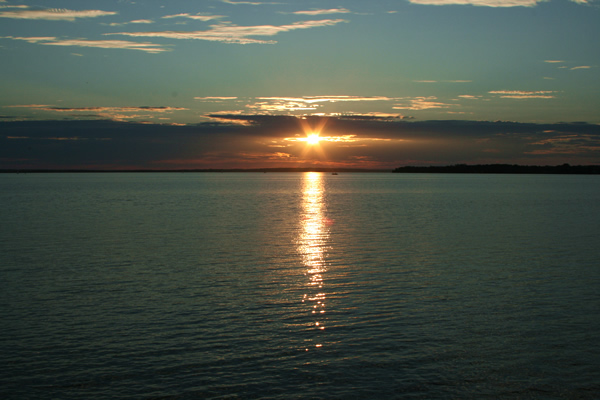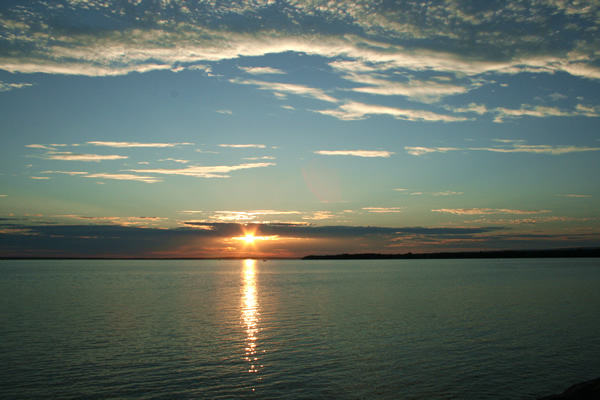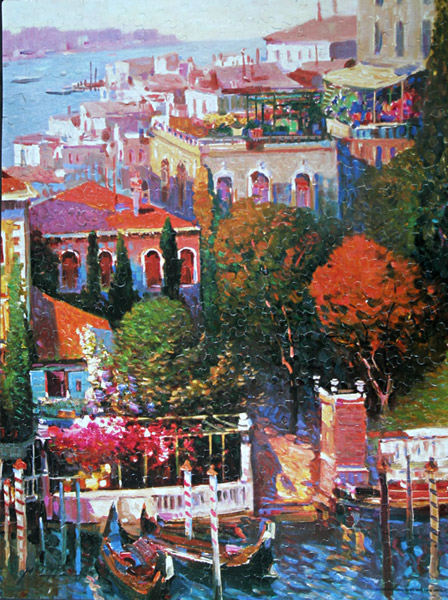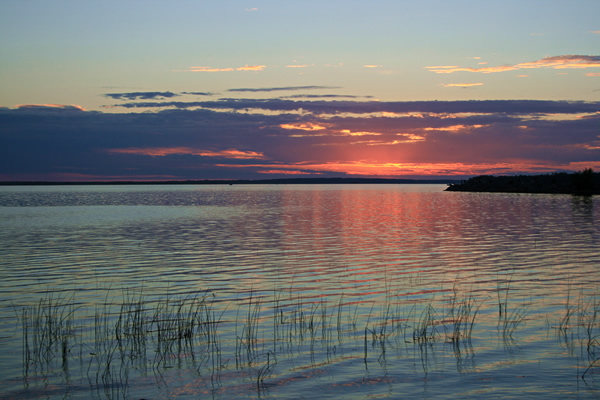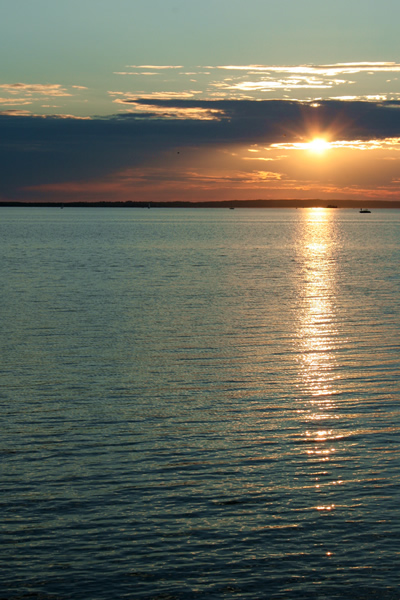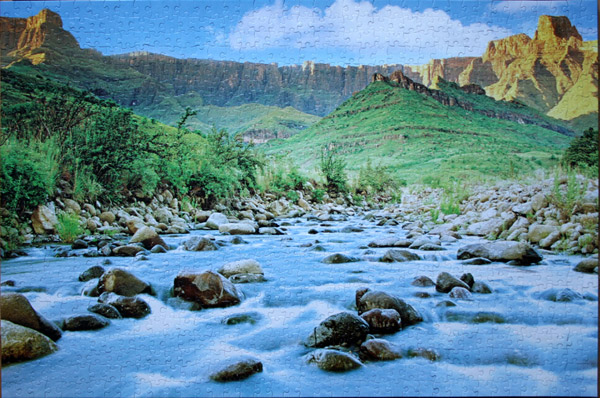
Size: 1000 pieces
Dimensions: 73cm x 48.5cm
Producer: Sure-Lox, The Canadian Group
Notes: The Drakensberg (“the Dragon Mountains”) is the highest mountain range in Southern Africa, rising to 3,482 metres in height. In Zulu, it is referred to as uKhahlamba (“barrier of spears”), and in Sesotho as Maluti (also spelled Maloti). Its geological history lends it a distinctive character amongst the mountain ranges of the world. Geologically, the range resembles the Simien Mountains of Ethiopia.
The mountains are capped by a layer of basalt approximately 1,400 meters thick, with sandstone lower down, resulting in a combination of steep-sided blocks and pinnacles.
The high treeless peaks of the Drakensberg (from 2,500 m upwards) have been described by the World Wildlife Fund as the Drakensberg alti-montane grasslands and woodlands ecoregion. These steep slopes are the most southerly high mountains in Africa, and being further from the equator provide cooler habitats at lower elevations than most mountain ranges on the continent. The high rainfall generates many mountain streams and rivers, including the sources of the Orange River, southern Africa’s longest, and the Tugela River. These mountains also have the world’s second-highest waterfall, the Tugela Falls (Thukela Falls), which has a total drop of 947 metres. The rivers that run from the Drakensberg are an essential resource for South Africa’s economy, providing water for the industrial provinces of Mpumalanga and Gauteng, which contains the city of Johannesburg. [Wiki]







